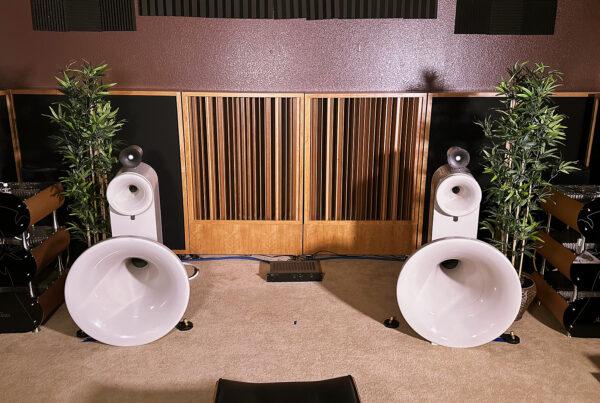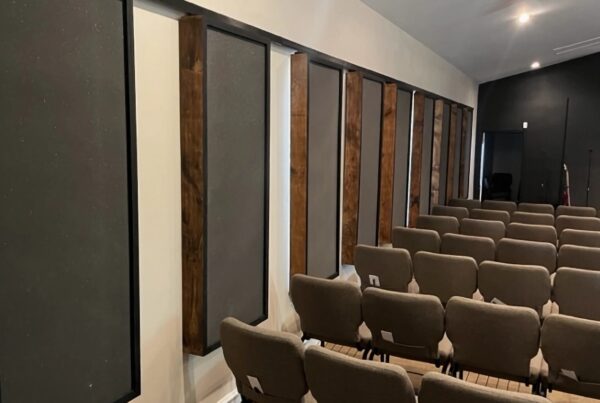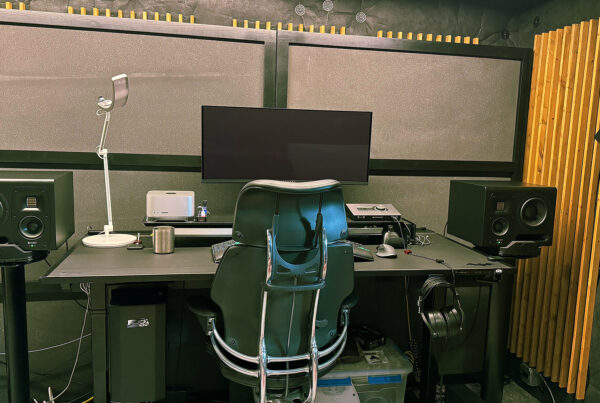Acoustic Fields
R + D FACILITY
5.2, 7.2, 11.2, 14.2 ATMOS
A Delicate
I have never been a big fan of multiple channels such as those we have in today’s consumer and professional theaters. It is difficult enough getting two channel stereo to work well within the “prison” walls of our rooms. The best room is no room at all. Room boundary surfaces create unwanted low-frequency pressure issues. These unwanted pressures are distributed throughout the room at certain intervals and distances. They can smother your vocals and exaggerate other sounds. Reflections from the sidewalls and other surfaces mess with the direct energy from our speakers to our ears. Reflections are room sound. It is a delicate balancing act to keep all the acoustic plates spinning to yield the desired sonic result with just two speakers. Multiple channels takes all of these two channel issues and multiples the problems exponentially with every channel number increase.
Sonic Goals
We know what the sonic strategy is for two channels. We want a wide soundstage that “extends” past our speakers. We want a depth, width, and height to our soundstage. We must have a strong central image where the speakers disappear. We want resolution and separation of all instruments and voice. We want to hear everything. What is the sonic goal with multiple channels? Is it a large sound stage? Do we want separation of instruments and voice in our soundstage? Do we need to hear everything? Let’s start with some basics and produce a strategy we can apply to multiple channels. We know one thing from two channels. We must balance the low’s, mid’s, and highs within our rooms. Special attention will need to be paid to the low frequency issues since we will have two subwoofers. We must manage reflections more than ever with multiple sources emanating energy from all directions. We have left, left center, right center, right, right rear, left rear and our LFE. We now have 8 channels if you really think about it.
Let’s start with what we did to the center channel configuration in our new studio. The center channels in commercial theaters are behind the screen. The center channel positioning on home theater rigs is on the floor, on the wall, in a cabinet and who knows where else. I know it is never where it should be. When I first saw a center channel speaker, I thought it was just a gimmick for speaker manufacturers to sell another box. Especially when I began seeing them sitting on the floor between the left and right channel. How can this channel sitting on the floor or inside a cabinet close to the floor integrate with the left and right channel speakers to create the proper integrated sound field presentation? We have taken the center channel and split the signal to a left center and right center speaker. We have used the same speaker as the left and right channels. With this approach we hope to achieve better continuity for the front of the house soundfield presentation. We will report our findings in supporting videos throughout this multiple channel journey.
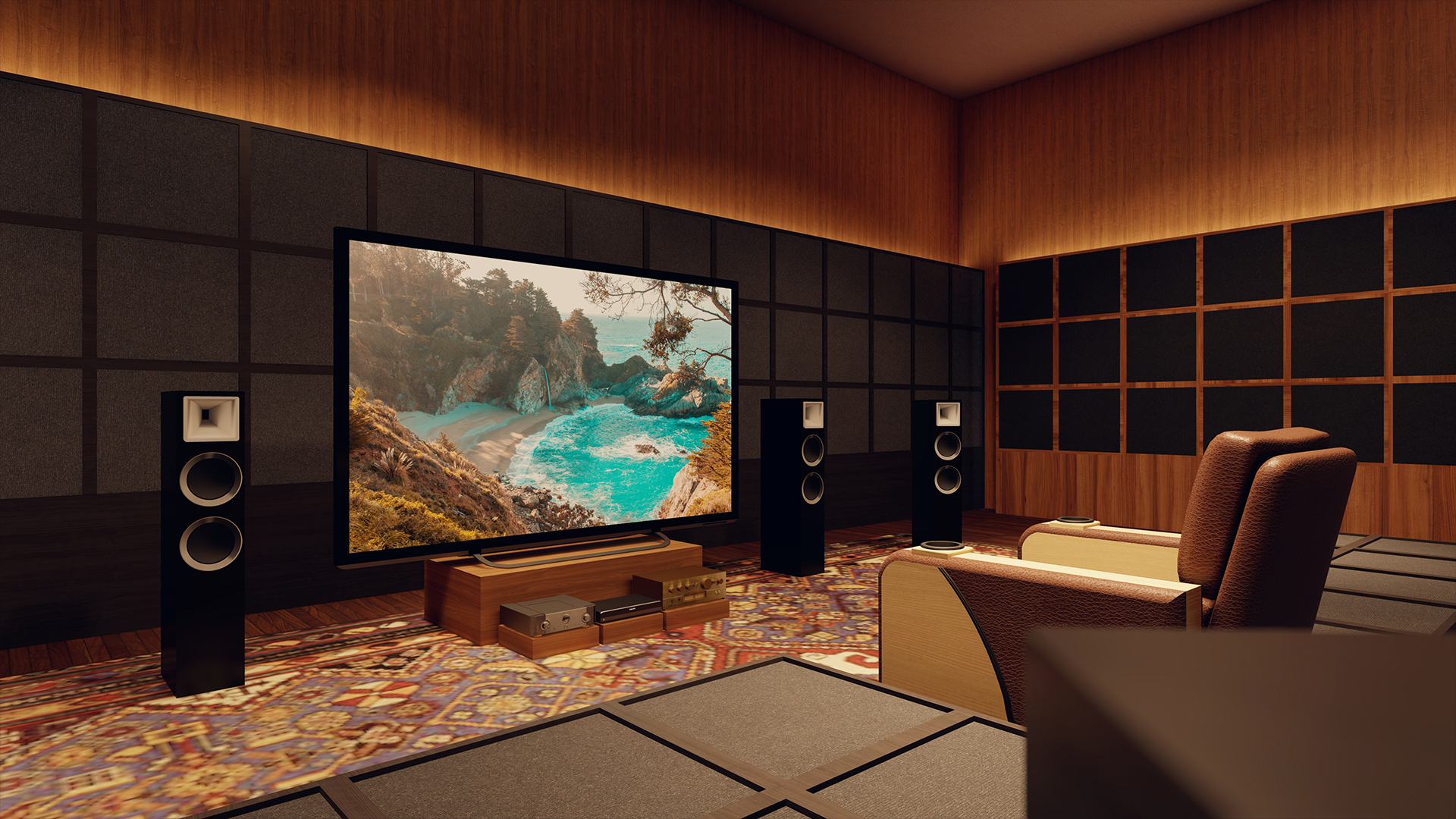
Room Data
Our room is 36′ w x 14′ h x 25′ d. Our low frequency axial issues are 30 – 80 Hz. We have no tangential or oblique issues that won’t respond to regular surface area treatment types. Our two offending walls are the end walls or short walls of our room. Those walls will be 24″ thick. We will place two 12″ subwoofers on both ends of the room. We will have the subwoofer stands on casters so we can position them in certain distances from walls and the listener. You need to be able to move any low-frequency producing device around within your room for tuning purposes. One could call this “voicing” the room. Finding the balanced position takes source movement and positioning. We will be able to control the amplitude and the crossover frequencies with the remote. Let’s take a look at treating the floor to ceiling issues by placing our ACDA-12 Modules on the floor. Notice them on each side of the listening position along with on the floor between the front of the house speakers.
The front and rear walls are composed of our ACDA-12 modules which provide the bases for the ACDA-10 modules and the diffusers on the rear wall. The front wall is ACDA-12 bases along with ACDA-10 modules sitting on top. The rear wall behind the listening position is ACDA-12 bases with QD-13 diffusers arranged in a two dimensional array. This is a 36′ long wall with three rows of diffusers.on top of the ACDA-12 bases.The sidewalls are ACDA-10 modules on ACDA-12 bases. Every small room has the largest unwanted low frequency pressure issues from 30 – 50 Hz. Every small room has issues from 30 – 300 Hz. which is the low -frequency part of the unit. After we add our foam to the face and cover it with fabric, we extend the absorption up to 6,300 Hz. It is the combination of frequency specific 30 – 50Hz. and broadband from 30 – 6,300 hz. that makes the most powerful weapons ever made to deal with low-frequency energy in small rooms.
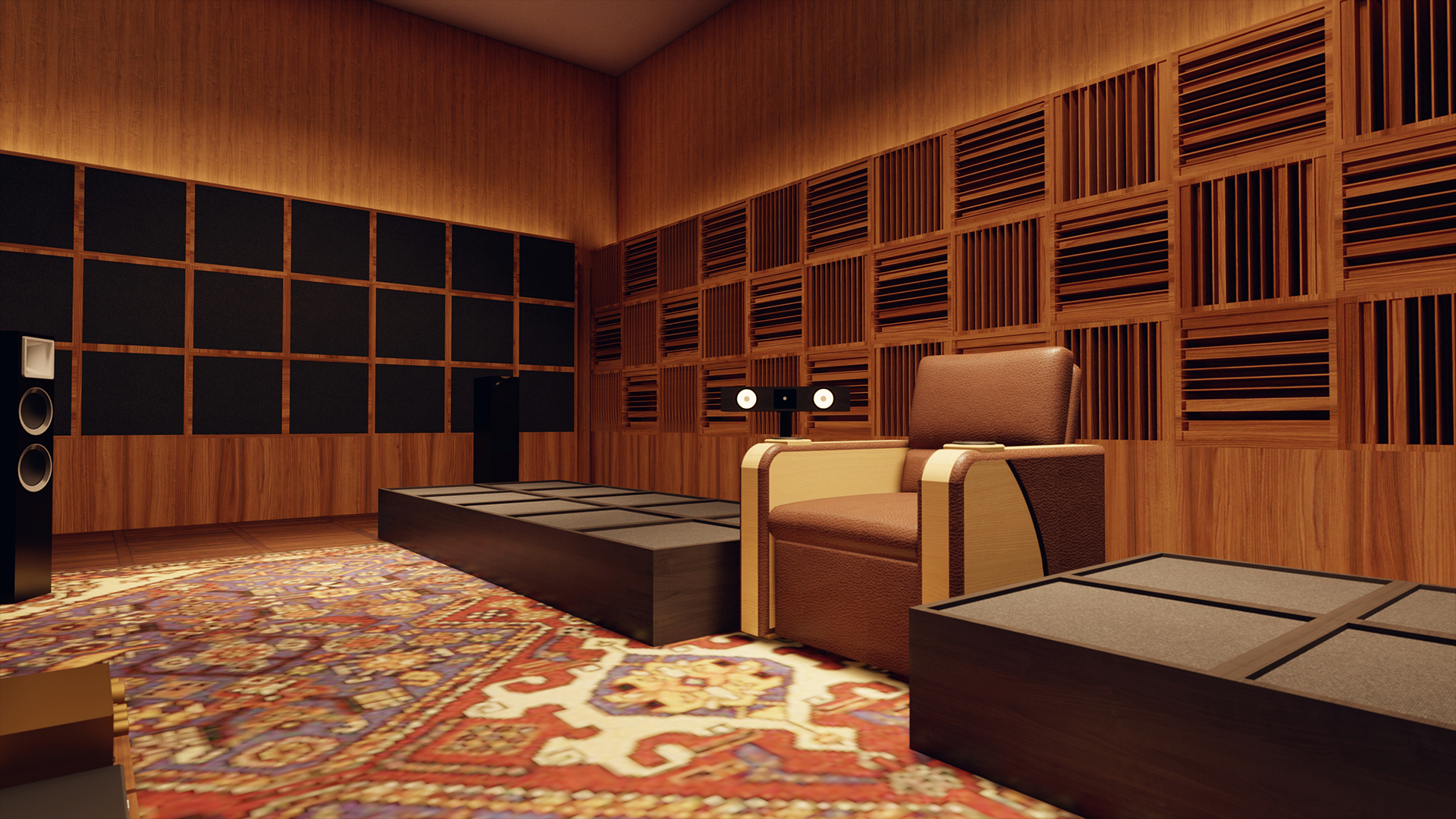
Channels
Let’s don’t forget about the rear channels in our 5.2 system. I have always noticed that rear channels never manage voice well. I am sure it has a lot to do with the signal that has recorded data in it but overall the systems I have listened to never seem to articulate vocals well. With this new object localization process where the engineers place objects or certain sounds in different channel room locations, I believe it is critical to have a speaker that was more designed for voice articulation for the rears. This is the design premise behind most center channel speakers. For these reasons, we will be using a center channel speaker for our two rear channels in our start up 5.1 system. It will be placed horizontally on stands with casters so we can move the rears around to achieve and study certain sonic objectives. We will begin this process with 5.2. After a few months, we will add side channels.
We will work our way through 11.2 and then to Dolby Atmos with 4 ceiling speakers using a 14.2 format. We will do videos after each set up and listening period every few months or so when we figure out what each new speaker or channel that we add to the system. We will work with splitting the center channel into left center and right center using the same speaker system as the left and right channel. We have chosen horns for this project due to their wider dispersion pattern and desire to fill the wide room with a balance of mids and highs that move throughout the room effortlessly. After we work with the horns for a while, we will try some dynamic drivers and report our findings with those as well. This is an 18 month journey through the current multiple channel configurations we see people using everyday. Grab a seat. It will be worth the journey.
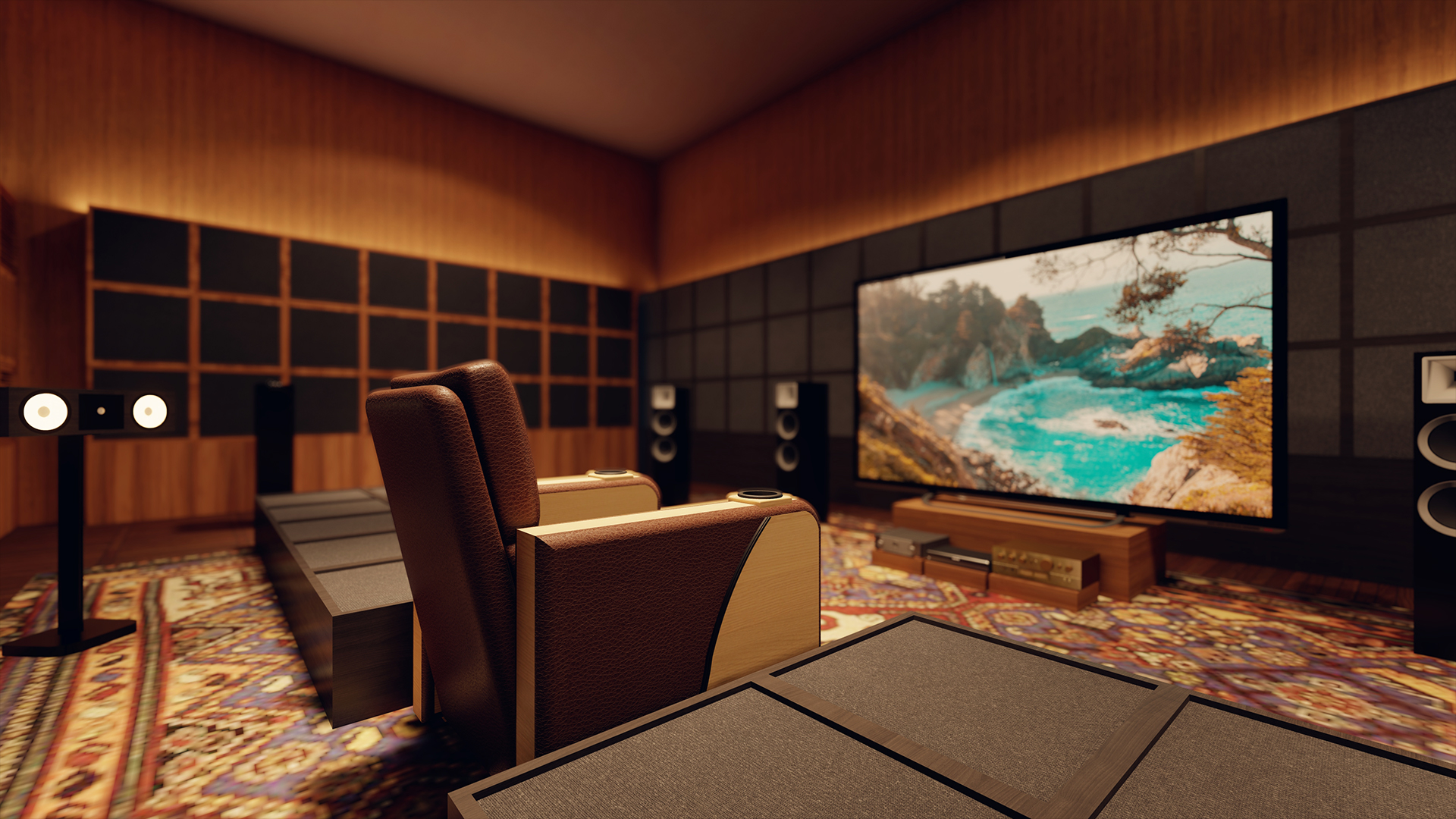
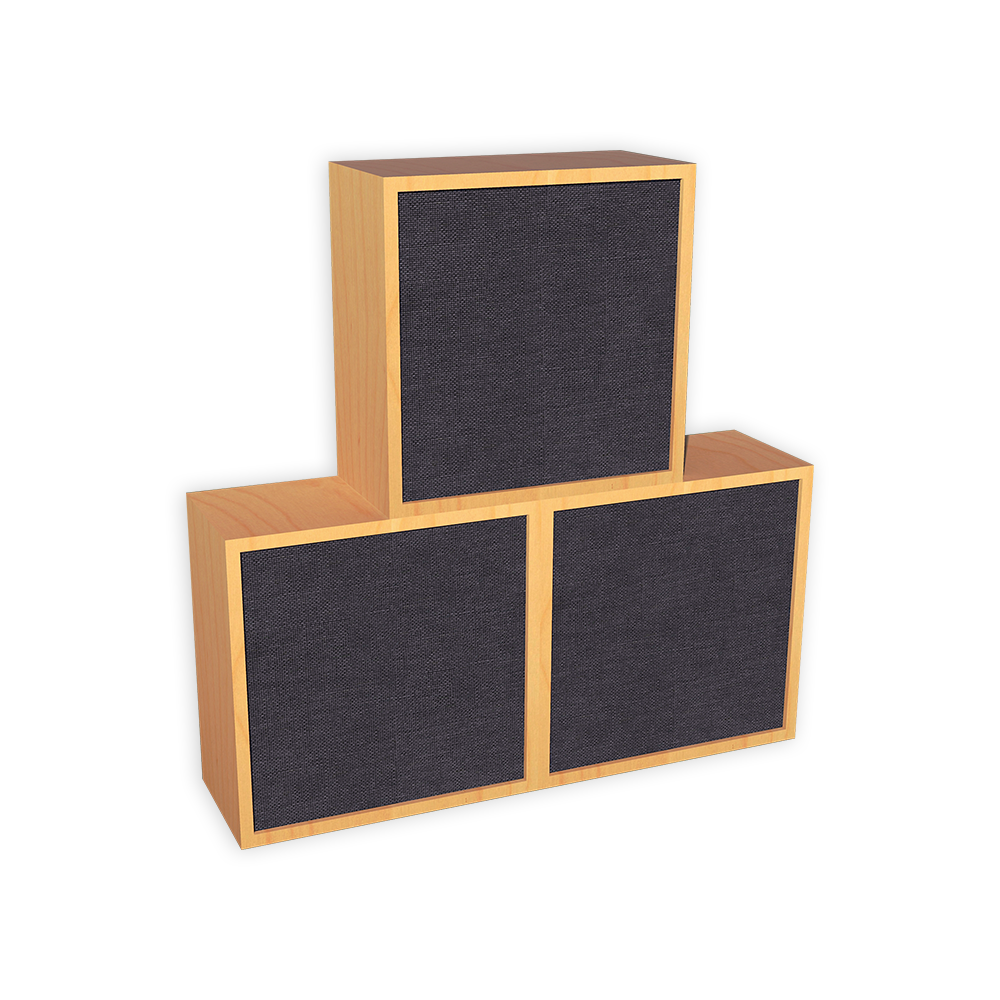
ACDA-10 M
The ACDA -10 modules are our highest performing product. They follow the absorption coefficients of the ACDA-10 with a stronger emphasis on the 60 – 80 Hz. range. The full range absorption for each module is 30 Hz. – 6,500 Hz.
This increased performance comes in a module that is 24″ x 24″ x 12″ and weighs 70 lbs. Modules are stackable and the number and surface area coverage can be fined tuned in your room size/volume/usage.
Do you want to solve your room acoustic problems?
There’s no one size fits all when it comes to room acoustics.
Get your FREE personal room acoustics analysis by chief acoustics engineer Dennis Foley.


